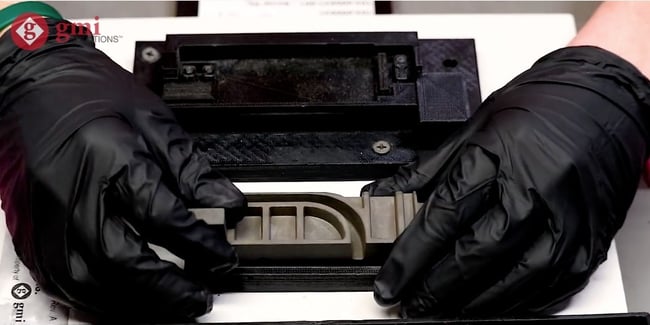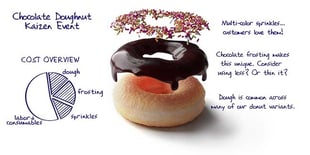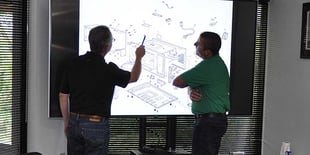Case Study: Hinge Assembly DfMA Design and Implementation

Written by Ross Schloegel
Transcript:
When a customer transfers a build to GMI, my work is just beginning. Part of my job as a manufacturing engineer on the GMI team is to develop efficiencies that help associates achieve greater throughput, reduce waste, and follow a well-guided process.
Efficiencies were exactly what was needed for a small friction hinge used to hold a keyboard in place on a piece of medical equipment. Operators had to use a cumbersome method for holding an individual nut in place while simultaneously flipping the hinge over several times, applying Loctite to the single screw, and then turning the screw several times into the nut being held in place.
This process was repeated 4 times on each hinge – once for each of the screw and nut assemblies. It was followed by operator verification that the nuts were seated properly in each of the 4 hex-shaped holes, and tightening each screw to the desired torque.
The operators developed an idea for simplifying this assembly process, and approached the GMI manufacturing engineering team with it. We talked through possible solutions, specifically a fixture that would hold all four of the nuts in place so the operator could start all of the screws in a single operation. The goal was twofold — to ensure proper securing of the nuts on the hinge, and to cut the number of required assembly steps in half.
After our collaboration, I developed a 3-part fixture that addressed all the operators’ concerns. Designed completely in-house and iterated on 3D printers in the GMI engineering lab, the fixture’s parts were printed to spec, and were tested then with the operators who had made the initial suggestions.
After a couple of minor tweaks and more iterative testing, we had a fully functional process that used the new fixtures and effectively cut the process time for that one step by nearly 75%. It also helped reduce operator frustration and shortened the new-hire training time since using the fixture essentially guarantees correct orientation of the inserted nuts.
Fixing an issue on something as small as a friction hinge assembly may seem minor, but with a run rate of nearly 30,000 units per year, the value adds up quickly.
Everyone at GMI is fully engaged in helping our customers receive a more consistent, higher quality product while also maintaining efficiencies — a balance that adds value throughout a product’s overall lifecycle and only increases the longer GMI makes an OEM’s product.






